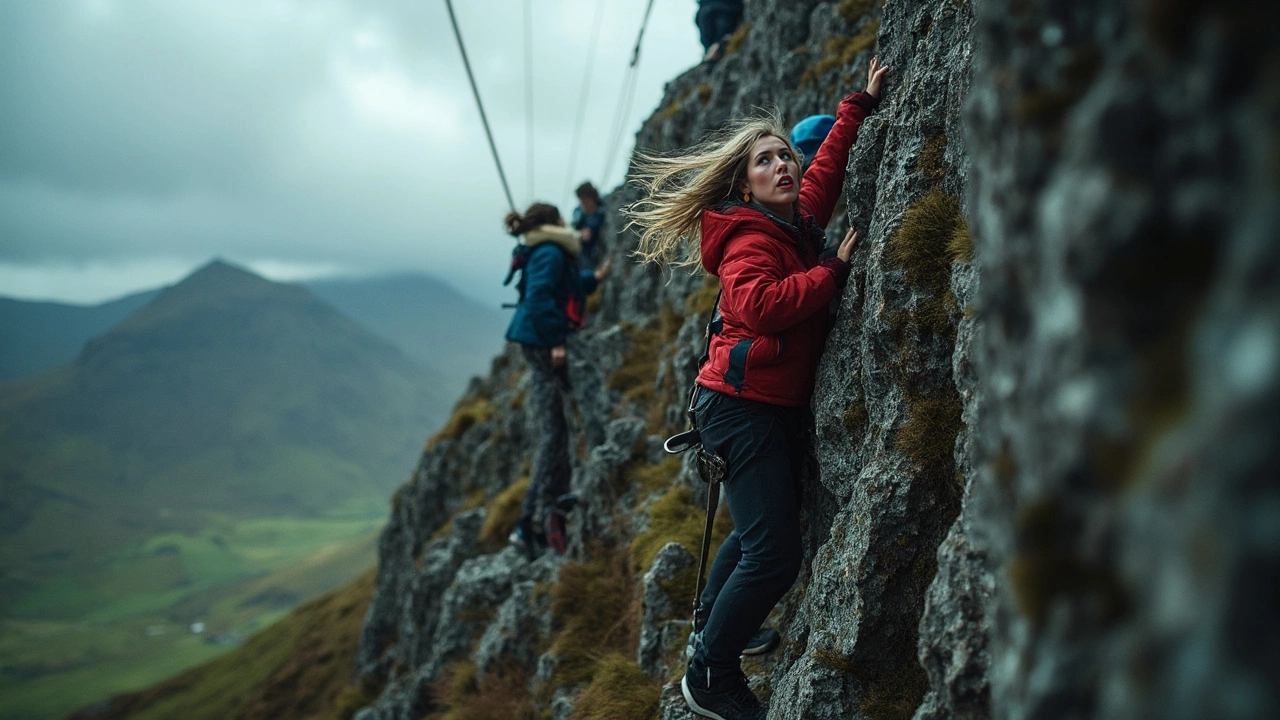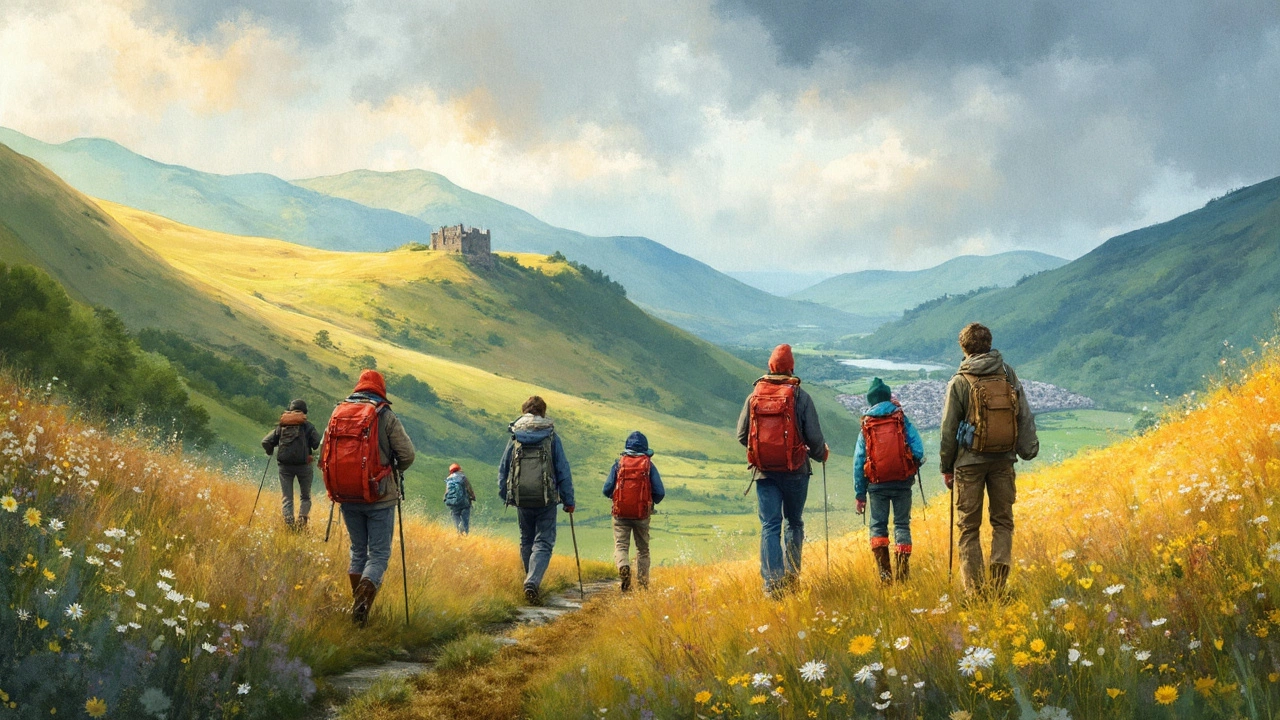Ever noticed how adventure holidays can mean something totally different for everyone? For some, it's ziplining over a jungle canopy. For others, it's hiking up to a scenic overlook—or battling rapids on a wild river. When you break it down, adventure travel usually fits into two categories: soft adventure and hard adventure. Knowing the difference matters, especially if you want to match your holiday vibe to your real level of thrill-seeking (and not just what looks good on Instagram).
Soft adventures are more about new experiences than risk. Think: e-biking through vineyards, relaxed kayaking trips, or easy mountain hikes. You get the stories, fun, and pictures—without needing to train for months or insure every limb.
- Soft Adventure: Gentle Thrills and Big Stories
- Hard Adventure: Pushing the Limits
- How to Choose Your Adventure Path
- Real-Life Tips for Memorable Adventures
Soft Adventure: Gentle Thrills and Big Stories
Soft adventure is where most people start when dipping their toes into adventure travel. This type of trip is designed for regular folks—not hardcore athletes. It’s about jumping out of your comfort zone, but not by much. You’ll find soft adventure activities on just about every continent and, honestly, they’re the backbone of the travel industry’s adventure section.
Here’s what actually falls under soft adventure:
- Hiking on well-marked trails (like the Camino de Santiago in Spain, or day hikes in the Grand Canyon)
- Guided cycling tours—sometimes they even let you use e-bikes for an extra boost
- Kayaking on calm rivers and lakes
- Wildlife safaris where you’re mostly chilling in jeeps or boats
- Skiing or snowshoeing on beginner routes
- Cultural activities with a hands-on angle, like cooking classes in Thailand or dance lessons in Argentina
Fun fact: according to the Adventure Travel Trade Association, over 60% of people who book adventure holidays end up choosing soft adventures. No shame here—it’s the sweet spot between seeing the world and not spraining an ankle.
The big win? You don’t need tons of gear, intense training, or a super-fit body. Most trips have guides who teach everything you need on the spot. If you can walk a few hours a day and enjoy a little bit of the unknown, you’re basically set!
Here are some quick tips for your first soft adventure:
- Check the daily activity levels—travel companies usually label trips as “easy,” “moderate,” or “challenging.”
- Pack for changing weather, especially for hikes or wildlife trips.
- Bring snacks and refillable water bottles. It sounds so basic, but you’ll thank yourself.
Soft adventure isn’t about bragging rights. It’s about real experiences—trying something new, meeting new people, and coming home with the best stories to tell at dinner.
Hard Adventure: Pushing the Limits
If soft adventure is about feeling alive, hard adventure is about pushing yourself as far as you can go—and maybe a bit further. This style of adventure travel is risky, often demanding real stamina, skills, and sometimes facing your fears. We're talking about things like free climbing, technical mountaineering, big-wave surfing, or trekking at extreme altitudes. These aren't day activities you casually wander into. You usually need some prep, physical training, and at least a basic understanding of what can go wrong.
The real deal with hard adventures? There’s usually no turning back once you start. Take mountaineering on Mount Everest—more than 800 people reached the summit in 2023, but it’s not exactly a guided tour. You have to deal with altitude sickness, freezing temps, and unpredictable weather. White-water rafting on Class V rapids is another classic—guides will tell you it’s as much about survival as it is about fun, and you’ll need to know what to do if tossed out of the boat.
Some of the most popular hard adventure choices around the world include:
- Rock climbing in Yosemite or Kalymnos
- Backcountry skiing in the Alps
- Long-distance trekking like the Annapurna Circuit in Nepal
- Diving with sharks in South Africa
- Solo bikepacking for weeks across Patagonia
Want a glimpse of how risky these trips actually get? Check out this quick breakdown of common injuries in hard adventure travel:
| Activity | Common Injury | Estimated Risk Level |
|---|---|---|
| Mountaineering | Frostbite, altitude sickness | High |
| White-water rafting | Bruises, dislocated shoulders | Medium |
| Backcountry skiing | Avalanche, fractures | High |
| Surfing big waves | Cuts, concussions | High |
If you’re new to this level of adventure, start by joining a reputable group tour and ask a ton of questions. Always check if your guide is certified and if travel insurance actually covers your chosen activity. Packing the right gear—and knowing how to use it—can make all the difference. And yeah, bragging rights are cool, but staying safe is even cooler.

How to Choose Your Adventure Path
If you want the best possible trip, the first thing to ask yourself is: What actually excites me while still feeling doable? Lots of people pick adventure holidays based on what sounds impressive, then end up overwhelmed or underwhelmed halfway through. Don’t make that mistake. Picking between soft and hard adventure means figuring out what matches your body, mindset, and comfort zones—not just your bucket list.
- Check your fitness level: Hard adventures like summit climbs or multi-day treks require real stamina. You don't want to be gasping for breath an hour in. Be honest: if you hate cardio, a demanding trek could feel more torturous than fun. Soft adventure, on the other hand, is great if you want fresh experiences without hardcore workouts.
- Think about risks you’re okay with. Soft adventures carry little danger and have guides that handle most of the safety. Hard adventures (like advanced mountain biking or white-water kayaking) can involve legit injury risks and sometimes require waivers and extra insurance.
- Consider group needs. Traveling with kids, parents, or a mixed group? Soft adventures—think wildlife safaris or snorkeling—offer memories for everyone, not just the adrenaline chasers.
- Factor in cost and gear. Intense hard adventures often come with higher price tags because of equipment, guides, and permits. Renting a bike for a countryside ride costs a fraction of a guided glacial ice climb.
If you like data for peace of mind, here’s a quick look at what people really choose:
| Type | Most Popular Activity | Average Time Spent | Common Age Group |
|---|---|---|---|
| Soft Adventure | Guided Day Hikes | Half-day | 30-65 |
| Hard Adventure | Multi-day Treks | 3-8 days | 18-40 |
Pick your adventure by asking yourself: Am I after challenge or connection? Will I need to train for this? Do I want to push limits, or just break away from city routine? The best adventure travel fits both your curiosity and your calendar—nobody wins by biting off more than they can chew. Your trip should leave you wanting more stories, not more recovery time.
Real-Life Tips for Memorable Adventures
The key to enjoying your adventure travel comes down to a few surprisingly simple habits. Whether you're after big peaks or small thrills, these tips can save you from rookie mistakes and disappointment. You don't need to be a pro—but a little planning goes way further than just booking the first trip you see online.
- Research your destination and activity level. Every spot has its own rules and seasons. Want to go white-water rafting? Some rivers in Costa Rica, for example, are only safe (and open) a few months a year.
- Pack for the activity, not just the weather. For a hiking trip, bring broken-in shoes—not fresh-out-of-the-box kicks. Even soft adventures go south if you're limping day two.
- Check reviews for guides and operators. The difference between a good guide and an average one can make or break your entire trip. A good guide knows the area, spots danger zones, and adapts the plan if needed.
- Always buy travel insurance that covers adventure activities. Standard policies might not include accidents from things like mountain biking or ziplining. The headache of paperwork with a sprained ankle abroad is so not worth it.
- Start with something just outside your comfort zone. People often overestimate what they can handle. It’s much safer and more fun to build up your adventure mojo step by step.
Here's a quick look at what travelers wish they’d known before setting off:
| Mistake | How to Avoid |
|---|---|
| Packing too much gear | Stick to essentials—less to haul means more freedom |
| Ignoring local advice | Locals know weather, trails, and shortcuts better than any app |
| Skipping safety briefings | Pay attention—even experienced travelers miss things |
One last thing: budget for extras. Those little fees for gear rental, park entrance, or local guides can add up fast. I learned this the hard way in Peru—turns out, hiring a porter for the last leg of a trek isn’t just a luxury. It can be the difference between making memories and getting stuck at camp. So, leave some wiggle room in your cash and your plans. The best adventure travel always has a little bit of the unexpected.
